Middle power
In international relations, a middle power is a sovereign state that is not a great power nor a superpower, but still has large or moderate influence and international recognition.

| Part of the Politics series | ||||
| Basic forms of government | ||||
|---|---|---|---|---|
.svg.png.webp) | ||||
| Power source | ||||
|
|
||||
| Power ideology | ||||
|
|
||||
| Power structure | ||||
|
|
||||
|
| ||||
The concept of the "middle power" dates back to the origins of the European state system. In the late 16th century, Italian political thinker Giovanni Botero divided the world into three types of states: grandissime (empires), mezano (middle powers), and piccioli (small powers). According to Botero, a mezano or middle power "has sufficient strength and authority to stand on its own without the need of help from others."[1]
History and definition
No agreed standard method defines which states are middle powers, aside from the broad idea that middle powers are states that have a 'moderate' ability to influence the behaviour of other states, in contrast to small power, which have 'little' ability to influence. Some researchers use Gross National Product (GNP) statistics to draw lists of middle powers around the world. Economically, middle powers are generally those that are not considered too "big" or too "small," however that is defined. However, economics is not always the defining factor. Under the original sense of the term, a middle power was one that had some degree of influence globally, but did not dominate in any one area. However, this usage is not universal, and some define middle power to include nations that can be regarded as regional powers.
According to academics at the University of Leicester and University of Nottingham:
middle power status is usually identified in one of two ways. The traditional and most common way is to aggregate critical physical and material criteria to rank states according to their relative capabilities. Because countries' capabilities differ, they are categorized as superpowers (or great powers), middle powers or small powers. More recently, it is possible to discern a second method for identifying middle power status by focusing on behavioural attributes. This posits that middle powers can be distinguished from superpowers and smaller powers because of their foreign policy behaviour – middle powers carve out a niche for themselves by pursuing a narrow range and particular types of foreign policy interest. In this way middle powers are countries that use their relative diplomatic skills in the service of international peace and stability.
According to Eduard Jordaan of Singapore Management University:
All middle powers display foreign policy behaviour that stabilises and legitimises the global order, typically through multilateral and cooperative initiatives. However, emerging and traditional middle powers can be distinguished in terms of their mutually-influencing constitutive and behavioural differences. Constitutively, traditional middle powers are wealthy, stable, egalitarian, social democratic and not regionally influential. Behaviourally, they exhibit a weak and ambivalent regional orientation, constructing identities distinct from powerful states in their regions and offer appeasing concessions to pressures for global reform. Emerging middle powers by contrast are semi-peripheral, materially inegalitarian and recently democratised states that demonstrate much regional influence and self-association. Behaviourally, they opt for reformist and not radical global change, exhibit a strong regional orientation favouring regional integration but seek also to construct identities distinct from those of the weak states in their region.[2]
Another definition, by the Middle Power Initiative: "Middle power countries are politically and economically significant, internationally respected countries that have renounced the nuclear arms race, a standing that give them significant international credibility."[3] Under this definition however, nuclear-armed states like India and Pakistan, and every state participant of the NATO nuclear sharing, would not be middle powers.
Middle power diplomacy
According to Laura Neak of the International Studies Association:
Although there is some conceptual ambiguity surrounding the term middle power, middle powers are identified most often by their international behavior–called 'middle power diplomacy'—the tendency to pursue multilateral solutions to international problems, the tendency to embrace compromise positions in international disputes, and the tendency to embrace notions of 'good international citizenship' to guide...diplomacy. Middle powers are states who commit their relative affluence, managerial skills, and international prestige to the preservation of the international order and peace. Middle powers help to maintain the international order through coalition-building, by serving as mediators and "go-betweens," and through international conflict management and resolution activities, such as UN peacekeeping. Middle powers perform these internationalist activities because of an idealistic imperative they associate with being a middle power. The imperative is that the middle powers have a moral responsibility and collective ability to protect the international order from those who would threaten it, including, at times, the great or principal powers. This imperative was particularly profound during the most intense periods of the Cold War.[4]
According to international relations scholar Annette Baker Fox, relationships between middle powers and great powers reveal more intricate behaviors and bargaining schemes than has often been assumed.[5] According to Soeya Yoshihide, "Middle Power does not just mean a state's size or military or economic power. Rather, 'middle power diplomacy' is defined by the issue area where a state invests its resources and knowledge. Middle Power States avoid a direct confrontation with great powers, but they see themselves as 'moral actors' and seek their own role in particular issue areas, such as human rights, environment, and arms regulations. Middle powers are the driving force in the process of transnational institutional-building."[6]
Characteristics of middle power diplomacy include:[6]
- Commitment to multilateralism through global institutions and allying with other middle powers.[7]
- High degree of civil society penetration in the country's foreign policy.
- A country that reflects and forms its national identity through a 'novel foreign policy': Peacekeeping, Human Security, the International Criminal Court, and the Kyoto Protocol
The Middle Powers Initiative (MPI), a program of the Global Security Institute, highlights the importance of middle powers diplomacy. Through MPI, eight international non-governmental organizations are able to work primarily with middle power governments to encourage and educate the nuclear weapons states to take immediate practical steps that reduce nuclear dangers, and commence negotiations to eliminate nuclear weapons. Middle power countries are particularly influential in issues related to arms control, being that they are politically and economically significant, internationally respected countries that have renounced the nuclear arms race, a standing that gives them significant political credibility.
Self-defined by nation states
The term first entered Canadian political discourse after World War II. Prime Minister Louis St. Laurent, for example called Canada "a power of the middle rank" and helped to lay out the classical definition of Canadian middle power diplomacy. When he was advocating for Canada's election to the United Nations Security Council, he said that while "...the special nature of [Canada's] relationship to the United Kingdom and the United States complicates our responsibilities," Canada was not a "satellite" of either but would "continue to make our decisions objectively, in the light of our obligations to our own people and their interest in the welfare of the international community."[8] Canadian leaders believed Canada was a middle power because it was a junior partner in larger alliances (e.g. NATO, NORAD), was actively involved in resolving disputes outside its own region (e.g. Suez Crisis), was not a former colonial power and therefore neutral in anti-colonial struggles, worked actively in the United Nations to represent the interests of smaller nations and to prevent the dominance of the superpowers (often being elected to the United Nations Security Council for such reasons), and because it was involved in humanitarian and peacekeeping efforts around the world.
In March 2008, Australian Prime Minister Kevin Rudd defined his country's foreign policy as one of "middle power diplomacy", along the lines of similar criteria. Australia would "influence international decision-makers" on issues such as "global economic, security and environmental challenges".[9]
Overlaps between great powers and middle powers
The overlaps between the lists of middle powers and great powers show that there is no unanimous agreement among authorities.[10]
Nations such as China, France, Russia, the United Kingdom and the United States are generally considered to be great powers due to their economic, military or strategic importance, their status as recognised nuclear powers and their permanent seats on the United Nations Security Council. Some academics also believe that Germany and Japan are great powers, but due to their large advanced economies and global influence as opposed to military and strategic capabilities.[11] Yet sources have at times referred to these nations as middle powers too.[12][13]
People in the field of international relations, such as Professor Kirton and a Sciences Po academic, support the claim that Italy is a great power due to its status and membership in the G7.[14][15] Moreover, according to a 2014 report by the Hague Centre for Strategic Studies (HCSS), Italy is listed among the great powers.[16] Although broad academic support for India as a great power is uncommon, some in the field of political science, such as Malik Mohan and Dr. Zbigniew Brzezinski, consider India to be a great power too.[17][18] In addition to it, Brazil is sometimes referred as a great power due to its economic power and influence.[19][20] Brazil, India and Italy are also described at times as middle powers.
The following is a list of 8 countries that have been, at some point in time, considered either great powers or middle powers by academics or other experts; The United States[21][22] and China,[23][24][25][26][27] considered beyond the category of Great power or as Superpower by many scholars,[28][29][30] are not listed:
List of middle powers
As with the great powers, there is no unanimous agreement among authorities as to which countries are considered middle powers. Lists are often the subject of much debate and tend to place comparatively large countries (e.g. Argentina) alongside relatively smaller ones (e.g. Norway).[48] Clearly not all middle powers are of equal status; some are considered regional powers and members of the G20 (e.g. Australia), while others could very easily be considered small powers (e.g. Czech Republic).[49] Some larger middle powers also play important roles in the United Nations and other international organisations such as the WTO.
The following is a list of 55 countries that have been, at some point in time, considered middle powers by academics or other experts:
- Africa
- Americas
- Asia
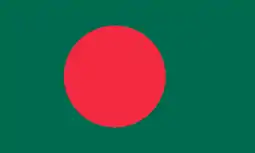 Bangladesh[54]
Bangladesh[54]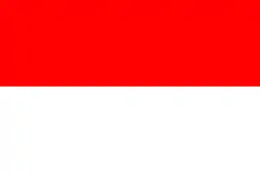 Indonesia[79][80][66]
Indonesia[79][80][66]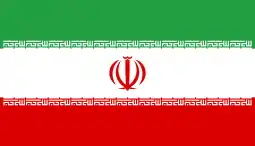 Iran[81][82][83][84]
Iran[81][82][83][84]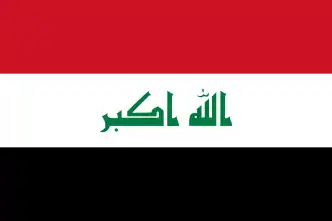 Iraq[54]
Iraq[54]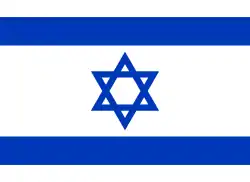 Israel[85][86][87]
Israel[85][86][87] Kazakhstan[54][88][89]
Kazakhstan[54][88][89]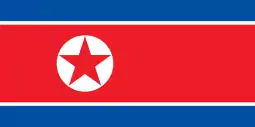 North Korea[90]
North Korea[90] South Korea[91][38][92][93][94][95][66]
South Korea[91][38][92][93][94][95][66]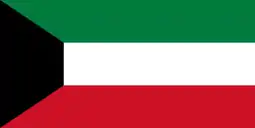 Kuwait[54]
Kuwait[54] Malaysia[96][80][59][97][66]
Malaysia[96][80][59][97][66]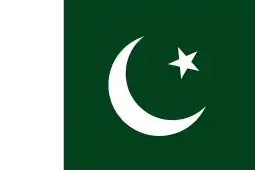 Pakistan[98][99]
Pakistan[98][99] Philippines[100][101]
Philippines[100][101] Qatar[102][103]
Qatar[102][103]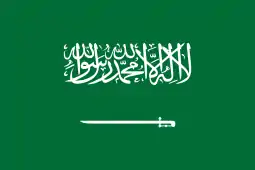 Saudi Arabia[85][104][105]
Saudi Arabia[85][104][105]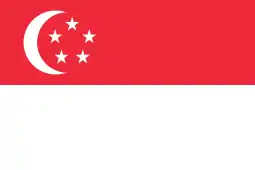 Singapore[106][107][108][109]
Singapore[106][107][108][109]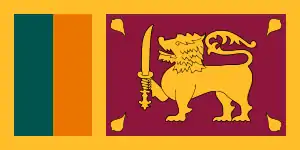 Sri Lanka[54]
Sri Lanka[54]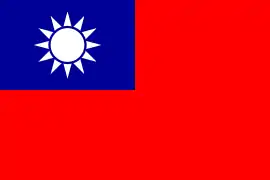 Taiwan[110][101][111]
Taiwan[110][101][111]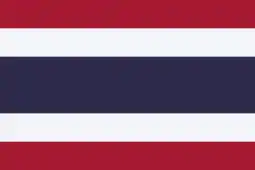 Thailand[112][101][66]
Thailand[112][101][66] Turkey[55][113][66]
Turkey[55][113][66] United Arab Emirates[114][115]
United Arab Emirates[114][115]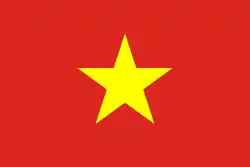 Vietnam[116][54][117]
Vietnam[116][54][117]
- Europe
 Austria[118][52][119][66][120]
Austria[118][52][119][66][120].svg.png.webp) Belgium[48][71][121][120]
Belgium[48][71][121][120]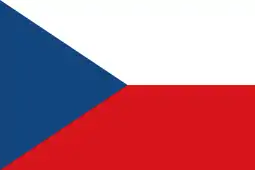 Czech Republic[49][118][122]
Czech Republic[49][118][122] Denmark[68][123]
Denmark[68][123] Finland[107][118][124]
Finland[107][118][124]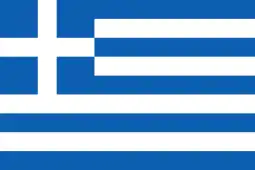 Greece[125]
Greece[125] Hungary[126]
Hungary[126] Ireland[127][128][129][130][131]
Ireland[127][128][129][130][131] Netherlands[68][123]
Netherlands[68][123] Norway[68][123]
Norway[68][123] Poland[76][132][133]
Poland[76][132][133] Portugal[54][134]
Portugal[54][134] Romania[118][52][124][120][135][136]
Romania[118][52][124][120][135][136] Spain[134]
Spain[134] Sweden[85][123][137]
Sweden[85][123][137] Switzerland[138]
Switzerland[138]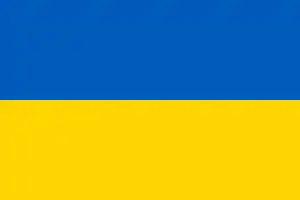 Ukraine[135][132]
Ukraine[135][132]
References
- Rudd K (2006) Making Australia a force for good, Labor eHerald Archived 27 June 2007 at the Wayback Machine
- Jordaan E (2003). "The concept of a middle power in international relations". Cite journal requires
|journal=(help) - Middle Powers Initiative (2004) Building Bridges: What Middle Power Countries Should Do To Strengthen the NPT Archived 14 June 2007 at the Wayback Machine, GSI
- Bishai LS (2000) From Recognition to Intervention: The Shift from Traditional to Liberal International Law Archived 28 February 2002 at the Wayback Machine
- Fox, Annette Baker, The Politics of Attraction: Four Middle Powers and the United States (Columbia University Press, 1977).
- Yoshihide, Soeya. "Middle Power Diplomacy". Archived from the original on 7 April 2020. Retrieved 18 May 2007.
- Patrick James; Mark J. Kasoff (2008). Canadian studies in the new millennium. University of Toronto Press. p. 265. ISBN 978-0-8020-9468-1. Retrieved 24 February 2016.
- H.H. Herstien, L.J. Hughes, R.C. Kirbyson. Challenge & Survival: The History of Canada (Scarborough, ON: Prentice-Hall, 1970). p 411
- Shanahan D (2008) Time to go global, urges Rudd Archived 17 May 2008 at the Wayback Machine, The Australian
- Mehmet Ozkan. "A NEW APPROACH TO GLOBAL SECURITY: PIVOTAL MIDDLE POWERS AND GLOBAL POLITICS" Perceptions: Journal of International Affairs XI.1 (2006): 77-95
- Encarta - The Great Powers. Archived from the original on 20 May 2004.
- P. Shearman, M. Sussex, European Security After 9/11(Ashgate, 2004) - According to Shearman and Sussex, both the UK and France were great powers now reduced to middle power status.
- Soeya Yoshihide, 'Diplomacy for Japan as a Middle Power, Japan Echo, Vol. 35, No. 2 (2008), pp. 36-41.
- Russia and the Great Powers
- "The Seven-Power Summit as an International Concert". www.g8.utoronto.ca.
- "Why are Pivot states so Pivotal?". Archived from the original on 11 February 2016. Retrieved 24 February 2016.
- Strategic Vision: America & the Crisis of Global Power by Dr. Zbigniew Brzezinski, pp 43–45. Published 2012.
- Malik, Mohan (2011). China and India: Great Power Rivals. United States: FirstForumPress. ISBN 978-1935049418.
- Kwang Ho Chun (2013). The BRICs Superpower Challenge: Foreign and Security Policy Analysis. Ashgate. ISBN 978-1-4094-6869-1. Retrieved 21 September 2015.
- Heine J (2006) On the Manner of Practising the New Diplomacy, ISN Archived 7 October 2007 at the Wayback Machine
- From Colony to Superpower: U.S. Foreign Relations since 1776 (Published 2008), by Professor George C. Herring (Professor of History at Kentucky University)
- "Asia Power Index | US". power.lowyinstitute.org. Retrieved 20 October 2020.
The United States remains the most powerful country in the region but registered the largest fall in relative power of any Indo–Pacific country in 2020. A ten-point overall lead over China two years ago has been narrowed by half in 2020.
- Muldavin, Joshua (9 February 2006). "From Rural Transformation to Global Integration: The Environmental and Social Impacts of China's Rise to Superpower". Carnegie Endowment for International Peace. Archived from the original on 14 May 2011. Retrieved 17 January 2010.
- "A Point Of View: What kind of superpower could China be?". BBC. 19 October 2012. Retrieved 21 October 2012.
- John, Emmanuel (13 June 2019). "China: Emerging superpower". Cite journal requires
|journal=(help) - "China as a global power". China.usc.edu. 13 November 2007. Retrieved 27 August 2010.
- "Asia Power Index | China". power.lowyinstitute.org. Retrieved 20 October 2020.
- Yu, Katrina. "China-US: Relations fray between the two superpowers". www.aljazeera.com. Retrieved 21 September 2020.
- "Five big takeaways from the 2019 Asia Power Index". www.lowyinstitute.org. Retrieved 9 July 2020.
- Welle (www.dw.com), Deutsche. "Many Germans believe China will replace US as superpower: survey | DW | 14.07.2020". DW.COM. Retrieved 30 July 2020.
- "Especialistas reclamam reconhecimento do Brasil como potência mundial". IBS News. 15 June 2011. Retrieved 7 April 2017.
- "Pela primeira vez Brasil emerge como potência internacional, diz Patriota". 10 May 2012. Archived from the original on 7 June 2012. Retrieved 7 April 2017.
- "Brazil - Emerging Soft Power of the World". allAfrica.com. 15 September 2011. Retrieved 7 April 2017.
- "Brasil ganha dos Estados Unidos em influência na América do Sul". The Economist. 2 September 2011. Retrieved 7 April 2017.
- Otte M, Greve J (2000) A Rising Middle Power?: German Foreign Policy in Transformation, 1989-1999, St. Martin's Press
- Sperling, James (2001). "Neither Hegemony nor Dominance: Reconsidering German Power in Post Cold-War Europe". British Journal of Political Science. 31 (2): 389–425. doi:10.1017/S0007123401000151.
- "Asia Power Index 2020 Edition | India". power.lowyinstitute.org. Retrieved 20 October 2020.
India falls just short of the major power threshold of 40 points in 2020 and its position as a future peer competitor to China has become less certain.
- Tobias Harris, 'Japan Accepts its "Middle-Power" Fate'. Far Eastern Economic Review Vol. 171, No. 6 (2008), p. 45: 'Japan is settling into a position as a middle power in Asia, sitting uneasily between the U.S., its security ally, and China, its most important economic partner. In this it finds itself in a situation similar to Australia, India, South Korea and the members of Asean.'
- Charalampos Efstathopoulosa, 'Reinterpreting India's Rise through the Middle Power Prism', Asian Journal of Political Science, Vol. 19, Issue 1 (2011), p. 75: 'India's role in the contemporary world order can be optimally asserted by the middle power concept. The concept allows for distinguishing both strengths and weakness of India's globalist agency, shifting the analytical focus beyond material-statistical calculations to theorise behavioural, normative and ideational parameters.'
- Robert W. Bradnock, India's Foreign Policy since 1971 (The Royal Institute for International Affairs, London: Pinter Publishers, 1990), quoted in Leonard Stone, 'India and the Central Eurasian Space', Journal of Third World Studies, Vol. 24, No. 2, 2007, p. 183: 'The U.S. is a superpower whereas India is a middle power. A superpower could accommodate another superpower because the alternative would be equally devastating to both. But the relationship between a superpower and a middle power is of a different kind. The former does not need to accommodate the latter while the latter cannot allow itself to be a satellite of the former."
- Jan Cartwright, 'India's Regional and International Support for Democracy: Rhetoric or Reality?', Asian Survey, Vol. 49, No. 3 (May/June 2009), p. 424: 'India's democratic rhetoric has also helped it further establish its claim as being a rising "middle power." (A "middle power" is a term that is used in the field of international relations to describe a state that is not a superpower but still wields substantial influence globally. In addition to India, other "middle powers" include, for example, Australia and Canada.)'
- "Operation Alba may be considered one of the most important instances in which Italy has acted as a regional power, taking the lead in executing a technically and politically coherent and determined strategy." See Federiga Bindi, Italy and the European Union (Washington, D.C.: Brookings Institution Press, 2011), p. 171.
- "Italy plays a prominent role in European and global military, cultural and diplomatic affairs. The country's European political, social and economic influence make it a major regional power." See Italy: Justice System and National Police Handbook, Vol. 1 (Washington, D.C.: International Business Publications, 2009), p. 9.
- Robert W. Cox, 'Middlepowermanship, Japan, and Future World Order, International Journal, Vol. 44, No. 4 (1989), pp. 823-862.
- "Asia Power Index 2020 Edition | Russia". power.lowyinstitute.org. Retrieved 20 October 2020.
- Neumann, Iver B. (2008). "Russia as a great power, 1815–2007". Journal of International Relations and Development. 11 (2): 128–151 [p. 128]. doi:10.1057/jird.2008.7.
As long as Russia's rationality of government deviates from present-day hegemonic neo-liberal models by favouring direct state rule rather than indirect governance, the West will not recognize Russia as a fully fledged great power.
- Chalmers, Malcolm (May 2015). "A Force for Order: Strategic Underpinnings of the Next NSS and SDSR". Royal United Services Institute. Briefing Paper (SDSR 2015: Hard Choices Ahead): 2.
While no longer a superpower (a position it lost in the 1940s), the UK remains much more than a 'middle power'.
- Solomon S (1997) South African Foreign Policy and Middle Power Leadership Archived 26 April 2015 at the Wayback Machine, ISS
- Cabada, Ladislav (November 2005). "The New International Role of Small(er) States" (PDF). The Journal of the Central European Political Science Association. 1 (1): 30–45. Retrieved 10 February 2020.
- Wurst J (2006) Middle Powers Initiative Briefing Paper, GSI Archived 14 June 2007 at the Wayback Machine
- Cooper AF (1997) Niche Diplomacy - Middle Powers after the Cold War, palgrave
- Bernard Wood, 'Towards North-South Middle Power Coalitions', in Middle Power Internationalism: The North-South Dimension, edited by Cranford Pratt (Montreal, McGill-Queen's University Press, 1990).
- Martín, Lucas (5 June 2020). "Morocco and Algeria, the struggle for regional leadership". Atalayar. Retrieved 9 August 2020.
- Oosterveld, Willem; Torossian, Bianca. "A Balancing Act: The Role of Middle Powers in Contemporary Diplomacy". Strategic Monitor 2018-2019. Clingendael Institute. Retrieved 18 May 2019.
- Andrew F. Cooper, Agata Antkiewicz and Timothy M. Shaw, 'Lessons from/for BRICSAM about South-North Relations at the Start of the 21st Century: Economic Size Trumps All Else?', International Studies Review, Vol. 9, No. 4 (Winter, 2007), pp. 675, 687.
- Gilley, Bruce (10 September 2012). "The Rise of the Middle Powers". The New York Times Company. Retrieved 18 May 2019.
- "Morocco's Contemporary Diplomacy as a Middle Power". JIA SIPA. 10 August 2019.
- Mace G, Belanger L (1999) The Americas in Transition: The Contours of Regionalism (p 153)
- Gladys Lechini, Middle Powers: IBSA and the New South-South Cooperation. NACLA Report on the Americas, Vol. 40, No. 5 (2007): 28-33: 'Today, a new, more selective South-South cooperation has appeared, bringing some hope to the people of our regions. The trilateral alliance known as the India, Brazil, and South Africa Dialogue Forum, or IBSA, exemplifies the trend … The three member countries face the same problems and have similar interests. All three consider themselves "middle powers" and leaders of their respective regions, yet they have also been subject to pressures from 'Emerging Middle Powers' Soft Balancing Strategy: State and Perspective of the IBSA Dialogue Forum. Hamburg: GIGA, 2007.
- Peter Vale, 'South Africa: Understanding the Upstairs and the Downstairs', in Niche Diplomacy: Middle Powers After the Cold War, edited by Andrew F. Cooper (London: Macmillan, 1997).
- Janis Van Der Westhuizen, 'South Africa's Emergence as a Middle Power', Third World Quarterly, Vol. 19, No. 3 (1998), pp. 435-455.
- Pfister R (2006) The Apartheid Republuc and African States Archived 12 June 2007 at the Wayback Machine, H-Net
- Eduard Jordaan, 'Barking at the Big Dogs: South Africa's Foreign Policy Towards the Middle East', Round Table, Vol. 97, No. 397 (2008), pp. 547-549.
- Flemes, Daniel, Emerging Middle Powers' Soft Balancing Strategy: State and Perspectives of the IBSA Dialogue Forum (1 August 2007). GIGA Working Paper No. 57. doi:10.2139/ssrn.1007692
- Gilley, Bruce; O'Neil, Andrew (8 July 2014). Middle Powers and the Rise of China. Georgetown University Press. p. 30. ISBN 9781626160842.
- Yasmi Adriansyah, 'Questioning Indonesia's place in the world', Asia Times (20 September 2011): 'Countries often categorized as middle power (MP) include Australia, Canada and Japan. The reasons for this categorization are the nations' advanced political-economic stature as well as their significant contribution to international cooperation and development. India and Brazil have recently become considered middle powers because of their rise in the global arena—particularly with the emerging notion of BRIC (Brazil, Russia, India and China).'
- Behringer RM (2005) Middle Power Leadership on the Human Security Agenda, SAGE
- Crosby AD (1997) A Middle-Power Military in Alliance: Canada and NORAD, JSTOR
- Petersen K (2003) Quest to Reify Canada as a Middle Power, Dissident Voice
- Inoguchi K (2002) The UN Disarmament Conference in Kyote Archived 29 September 2007 at the Wayback Machine
- Heine J (2006) On the Manner of Practising the New Diplomacy, ISN Archived 7 October 2007 at the Wayback Machine
- "THE UN DISARMAMENT CONFERENCE IN KYOTO". disarm.emb-japan.go.jp. Archived from the original on 16 January 2013. Retrieved 13 November 2015.
- Heine, Jorge. "On the Manner of Practising the New Diplomacy". The Centre for International Governance Innovation. Archived from the original on 7 October 2007. Retrieved 13 November 2015.
- Louis Belanger and Gordon Mace, 'Middle Powers and Regionalism in the Americas: The Cases of Argentina and Mexico', in Niche Diplomacy: Middle Powers After the Cold War, edited by Andrew F. Cooper (London: Macmillan, 1997).
- Pierre G. Goad, 'Middle Powers to the Rescue?', Far Eastern Economic Review, Vol. 163, No. 24 (2000), p. 69.
- Pellicer O (2006) Mexico – a Reluctant Middle Power? Archived 14 June 2007 at the Wayback Machine, FES
- McKercher, B. J. C. (2012). Routledge Handbook of Diplomacy and Statecraft. Routledge. ISBN 9781136664366.
a Middle Power like Peru lack the diplomatic and other resources...
- "Asia Power Index 2020 Edition | Indonesia". power.lowyinstitute.org. Retrieved 20 October 2020.
- Jonathan H. Ping, Middle Power Statecraft: Indonesia, Malaysia, and the Asia Pacific (Aldershot: Ashgate Publishing, 2005).
- Anoushiravan Ehteshami and Raymond Hinnesbusch, Syria and Iran: Middle Power in a Penetrated Regional System (London: Routledge, 1997).
- Samhat, Nayef H. (2000). "Middle Powers and American Foreign Policy: Lessons for Irano-U.S. Relations". Policy Studies Journal. 28 (1): 11–26. doi:10.1111/j.1541-0072.2000.tb02013.x.
- Ahouie M (2004) Iran Analysis Quarterly, MIT
- Foreign Affairs Committee (2006) Iran
- Buzan, Barry (2004). The United States and the Great Powers. Cambridge, United Kingdom: Polity Press. p. 71. ISBN 0-7456-3375-7.
- "www.lrb.co.uk".
- "www.acronym.org.uk". Archived from the original on 4 March 2016. Retrieved 2 February 2014.
- "Kazakhstan and the struggle over Central Asia". Spectator USA. 5 June 2019.
- Zholdasbekova, Aidar Kurmashev, Dana Akhmedyanova, Houman Sadri, Akbota (1 October 2018). "Kazakhstan's Middle Power Response to Terrorism". Insight Turkey – via www.insightturkey.com.
- "Asia Power Index 2020 Edition | North Korea". power.lowyinstitute.org. Retrieved 20 October 2020.
- "Asia Power Index 2020 Edition | South Korea". power.lowyinstitute.org. Retrieved 20 October 2020.
- Armstrong DF (1997) South Korea's foreign policy in the post-Cold War era: A middle power perspective Archived 20 July 2011 at the Wayback Machine
- Gilbert Rozman, 'South Korea and Sino-Japanese Rivalry: A Middle Power's Options Within the East Asia Core Triangle', Pacific Review, Vol. 20, No. 2 (2007), pp. 197-220.
- Woosang Kim, 'Korea as a Middle Power in Northeast Asian Security', in The United States and Northeast Asia: Debates, Issues, and New Order, edited by G. John Ikenbgerry and Chung-in Moon (Lantham: Rowman & Littlefield, 2008).
- Sheridan, Greg (27 November 2008). "The plucky country and the lucky country draw closer". The Australian. Archived from the original on 12 September 2012.
- "Asia Power Index 2020 Edition | Malaysia". power.lowyinstitute.org. Retrieved 20 October 2020.
- Kim R. Nossal and Richard Stubbs, 'Mahathir's Malaysia: An Emerging Middle Power?' in Niche Diplomacy: Middle Powers After the Cold War, edited by Andrew F. Cooper (London: Macmillan, 1997).
- "Asia Power Index 2020 Edition | Pakistan". power.lowyinstitute.org. Retrieved 20 October 2020.
- Barry Buzan (2004). The United States and the great powers: world politics in the twenty-first century. Polity. pp. 71, 99. ISBN 978-0-7456-3374-9. Retrieved 27 December 2011.
- "Asia Power Index 2020 Edition | Philippines". power.lowyinstitute.org. Retrieved 20 October 2020.
- Jonathan H. Ping Middle Power Statecraft (p 104)
- Cooper, Andrew F. "Middle Powers: Squeezed out or Adaptive?". Public Diplomacy Magazine. Archived from the original on 29 June 2017. Retrieved 12 March 2015.
- Kamrava, Mehran. "Mediation and Qatari Foreign Policy" (PDF). Archived from the original (PDF) on 7 October 2013. Retrieved 12 March 2015.
- "Kawaguchi asks Saudi Arabia to put pressure on Iraq Japan Policy & Politics". findarticles.com. Archived from the original on 23 October 2007.
- "Saudi Surprise". 26 August 2004. Archived from the original on 26 August 2004.
- "Asia Power Index 2020 Edition | Singapore". power.lowyinstitute.org. Retrieved 20 October 2020.
- "The Concept of Middle Power". Ohio State University. Retrieved 8 February 2020.
- "Middle Powers,Norms, and Balancing: ROK's and ASEAN's Normative Balancing against Rising China" (PDF). Chung-Ang University. Retrieved 8 February 2020.
- de Swielande, Tanguy Struye; Vandamme, Dorothée; Walton, Dorothée; Wilkins, Thomas (2018). "Chapter 14: The Singapore paradox: The "little red dot" as a "middle power"". In Peng Er, Lam (ed.). Rethinking Middle Powers in the Asian Century: New Theories, New Cases. Routledge. ISBN 9780429873843.
- "Asia Power Index 2020 Edition | Taiwan". power.lowyinstitute.org. Retrieved 20 October 2020.
Three middle powers — Vietnam, Australia and Taiwan — were the only countries to gain in comprehensive power in 2020. When neither the United States nor China can establish undisputed primacy in Asia, the actions and choices of middle powers will become more consequential.
- Jacobs, Bruce (22 January 2016). "Taiwan signals its readiness to join the world's democratic powers". the sydney morning herald. Retrieved 10 January 2020.
- "Asia Power Index 2020 Edition | Thailand". power.lowyinstitute.org. Retrieved 20 October 2020.
- Meltem Myftyler and Myberra Yyksel, 'Turkey: A Middle Power in the New Order', in Niche Diplomacy: Middle Powers After the Cold War, edited by Andrew F. Cooper (London: Macmillan, 1997).
- Laipson, Ellen (3 September 2014). "The UAE and Egypt's New Frontier in Libya". The National Interest. Retrieved 26 October 2014.
- Evans, Gareth (29 June 2011). "Middle Power Diplomacy". Retrieved 26 October 2014.
- "Asia Power Index 2020 Edition | Vietnam". power.lowyinstitute.org. Retrieved 20 October 2020.
Three middle powers — Vietnam, Australia and Taiwan — were the only countries to gain in comprehensive power in 2020. When neither the United States nor China can establish undisputed primacy in Asia, the actions and choices of middle powers will become more consequential.
- "Middle Powers, Joining Together: The Case of Vietnam and Australia".
- "A Balancing Act: The Role of Middle Powers in Contemporary Diplomacy". The Hague Center for Strategic Studies. Retrieved 8 February 2020.
- Lauber, Volkmar (17 September 2019). Contemporary Austrian Politics. Routledge. ISBN 9780429720987.
- Taylor, Ian (2001). Stuck in Middle GEAR: South Africa's Post-apartheid Foreign Relations. London: Greenwood Publishing Group. p. 19. ISBN 9780275972752.
- Caplan G (2006) From Rwanda to Darfur: Lessons learned?, SudanTribune
- John, Ravenhill (1988). "Cycles of middle power activism: Constraint andchoice in Australian and Canadian foreign policies" (PDF). Australian Journal of International Affairs. 52 (3): 309–327. doi:10.1080/10357719808445259. Retrieved 10 February 2020.
- Pratt C (1990) Middle Power Internationalism, MQUP
- I. Handel, Michael (1990). Weak States in the International System. Taylor & Francis. p. 28. ISBN 9780714640730.
- Thanos Veremēs (1997) The Military in greek Politics "Black Rose Books"
- Higgott RA, Cooper AF (1990) Middle Power Leadership and Coalition Building
- Pratt, Cranford (1990). Middle Power Internationalism: The North-South Dimension. Montreal: McGill–Queen's University Press. p. 32. ISBN 9780773507258.
- Tonra, Ben; Ward, Eilís (2002). "Chapter 1: Ireland, Peacekeeping and Defence Policy: Challenges and Opportunities". In Murphy, Ray (ed.). Ireland in International Affairs: Interests, Institutions and Identities. Dublin, Republic of Ireland: Institute of Public Administration. p. 20–21. ISBN 9781902448763.
- Gillespie, Paul (17 January 2015). "Representing Ireland – multitasking in a multilateral world". The Irish Times. Retrieved 8 February 2020.
- Ishizuka, Katsumi (23 April 2014). "Four: Ireland's peacekeeping policy in the post-Cold War era". Ireland and International Peacekeeping Operations 1960-2000. Routledge. p. 136. ISBN 9781135295264.
- Bolton, Matthew; Nash, Thomas (7 May 2010). "The Role of Middle Power–NGO Coalitions in Global Policy: The Case of the Cluster Munitions Ban". Global Policy. Wiley. 1 (2): 172–184. doi:10.1111/j.1758-5899.2009.00015.x.
- Spero, Joshua (2004). Bridging the European Divide. Rowman & Littlefield. p. 206. ISBN 9780742535534.
- Kirton J (2006) Harper’s Foreign Policy Success?
- according to Yves Lacoste, Géopolitique, Larousse, 2009,p. 134, both Spain and Portugal exert a real influence in Africa and in the Americas.
- Turkish Policy Quarterly, Volume 4. Turkey: Big Art. 2005.
- Wood, Bernald (1 June 1988). The middle powers and the general interest. Ottawa: The North-South Institute. ISBN 9780920494813.
- Rudengren J, Gisle P, Brann K (1995) Middle Power Clout: Sweden And The Development Banks Archived 22 April 2007 at the Wayback Machine
- "South African Foreign Policy and Middle Power Leadership - Fairy God-mother, Hegemon or Partner? In Search of a South African Foreign Policy - Monograph No 13, 1997". 26 April 2015. Archived from the original on 26 April 2015.
- "Asia Power Index 2020 Edition | Australia". power.lowyinstitute.org. Retrieved 20 October 2020.
Three middle powers — Vietnam, Australia and Taiwan — were the only countries to gain in comprehensive power in 2020. When neither the United States nor China can establish undisputed primacy in Asia, the actions and choices of middle powers will become more consequential.
- Hazleton WA (2005) Middle Power Bandwagoning? Australia's Security Relationship with the United States, allacademic
- "Asia Power Index 2020 Edition | New Zealand". power.lowyinstitute.org. Retrieved 20 October 2020.
Further reading
- Shifting Power in Asia-Pacific? The Rise of China, Sino-US Competition and Regional Middle Power Allegiance (by Enrico Fels (Bonn University))
- Weak States in the International System (By Michael I. Handel)
- Relocating Middle Powers: Australia and Canada in a Changing World Order (Book info)
- Middle Power Internationalism (Book info)
- Emerging Powers: Governance in a Changing Global Order (A Queen's Centre for International Relations annual report)